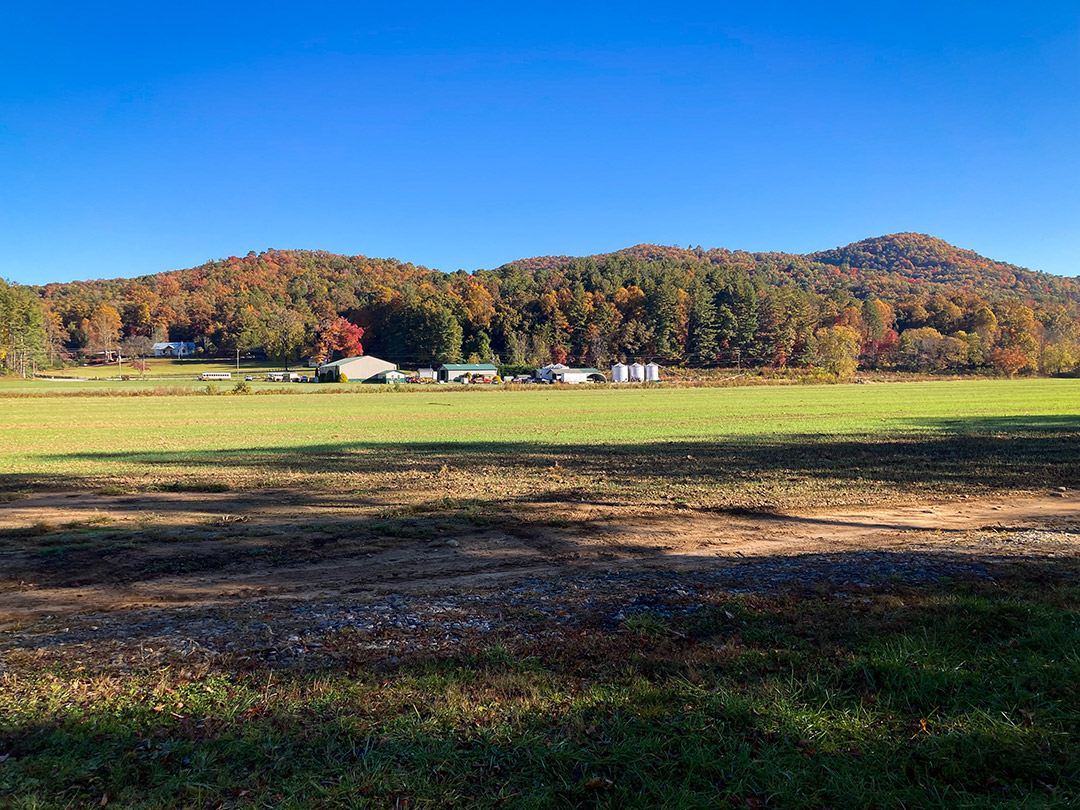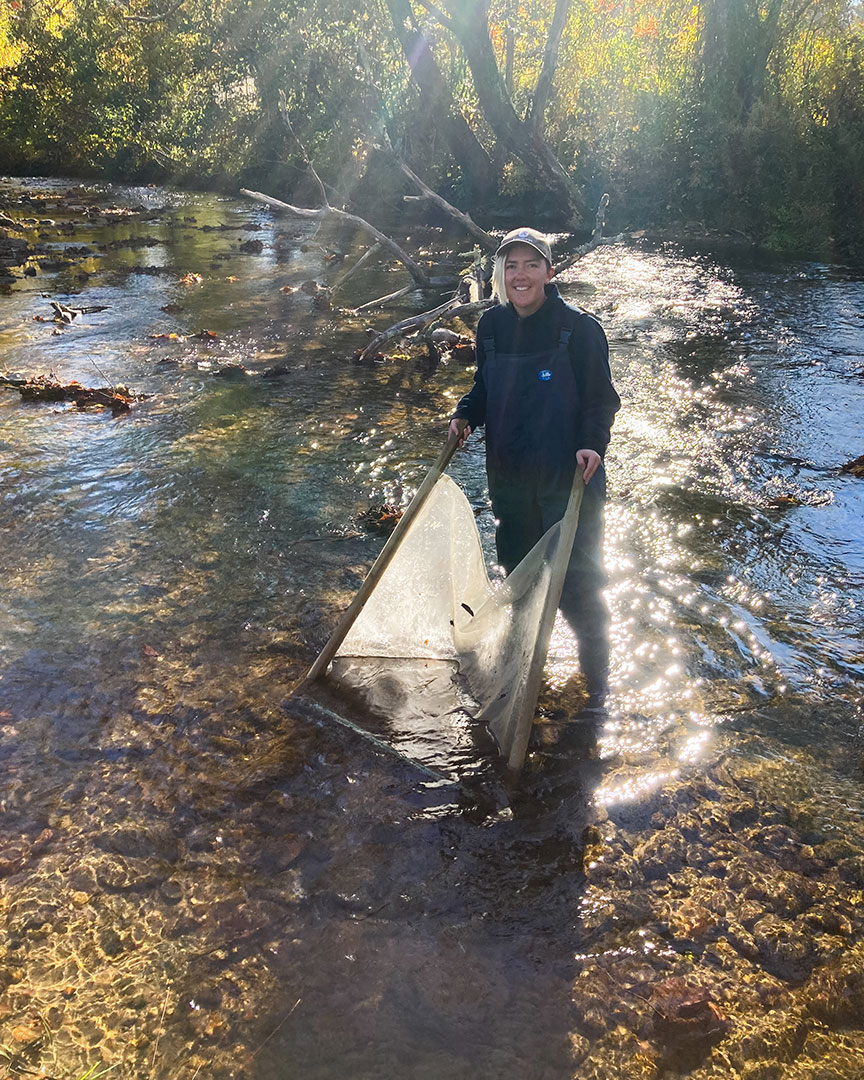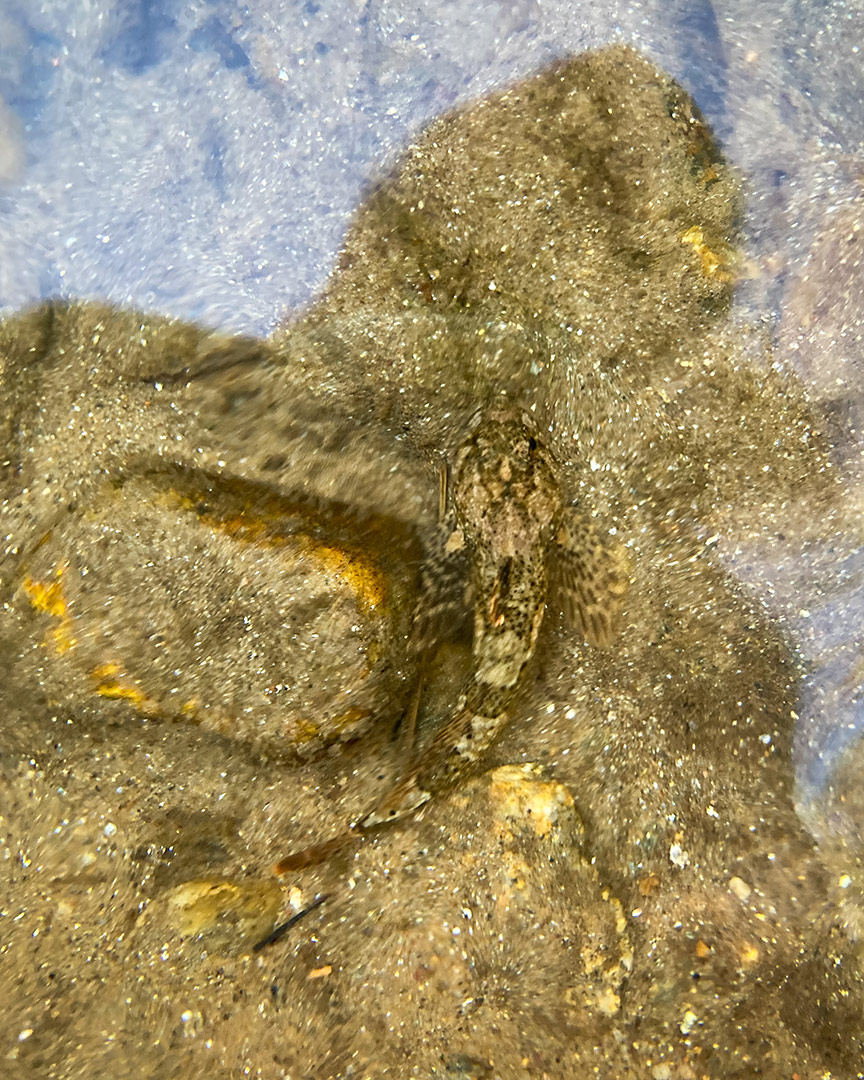A Stream Survey with the Mills River Partnership
Story and photos by Virginia Hunter, AmeriCorps Communications & Education Associate with Conserving Carolina.
In late October, I had the chance to team up with fellow Project Conserve member Sophie Edlich and the Mills River Partnership! It was a chilly but gorgeous fall morning out on the North Fork of the Mills River, as we led local eighth-graders in a macroinvertebrate stream survey. Our riverside station was one stop on their agricultural field trip at North River Farms.

Crystal clear waters of the North Fork of the Mills River, sparkling in the morning sun.
“What are macroinvertebrates?” you may wonder. Aquatic macroinvertebrates (“invertebrate” = no backbone; “macro” = can be seen without a microscope) come in diverse forms, such as crayfish with exoskeletons, snails with shells, and the nymph form of flies. Macroinvertebrates play crucial roles in freshwater ecosystems, and their presence (or absence) can tell scientists a lot about stream health. Direct testing for pollutants can be useful, but only gives data from a specific point in time. One rainstorm can drastically change pollution levels. To survive, some macroinvertebrates need pristine water quality over time, from weeks to years. Thus a stream survey provides quality data, while also being relatively inexpensive and easy for landowners to do themselves. Not to mention, it’s also fun and instructive for kids to see these “bugs” up close!


Wearing insulated waders in the icy water, Sophie and I netted river samples while students observed our techniques.
Sophie holding the net as Virginia shuffles along the streambed.
There were lots of “ooh!”s (and a few “eew!”s) back on the riverbank, as students spotted movement amongst the debris. Students gently transferred their finds with tweezers into water-filled ice trays and identified species using a dichotomous key.

Our survey turned up over a dozen macroinvertebrate species, including stonefly and mayfly nymphs, both intolerant of water pollution. We also found minnows, bottom feeders, and a salamander. Taken together, these are indicators of excellent stream health.
Final results of our macroinvertebrate stream survey, living proof of the stream’s health.
A small salamander students found during the survey.
The North Fork flows out of Pisgah National Forest onto North River Farms, who work closely with the Mills River Partnership to protect water quality. Our stream survey is evidence that with careful stewardship, agriculture and healthy ecosystems can coexist alongside each other. Thank you to Sophie Edlich, the Mills River Partnership, and North River Farms!